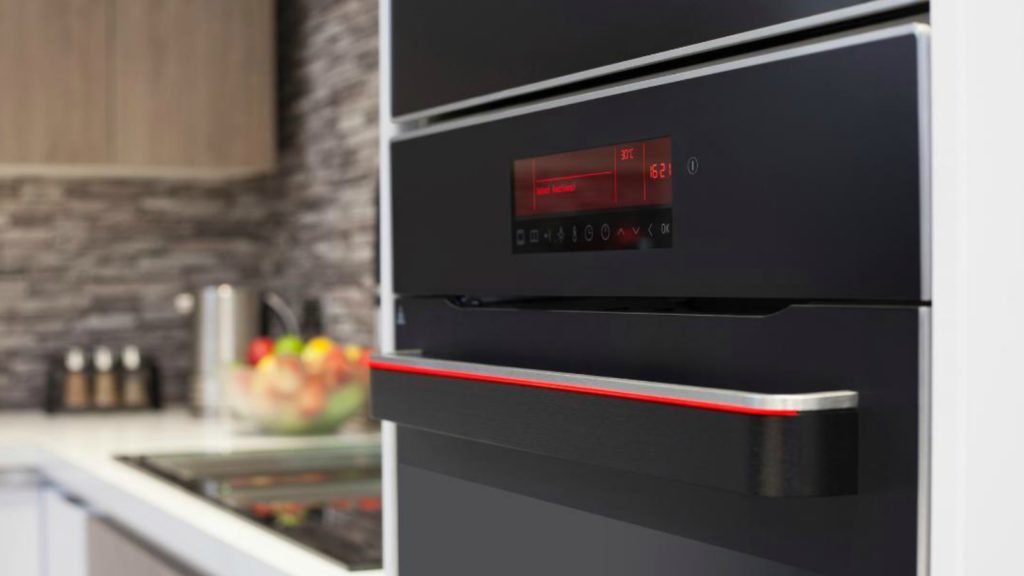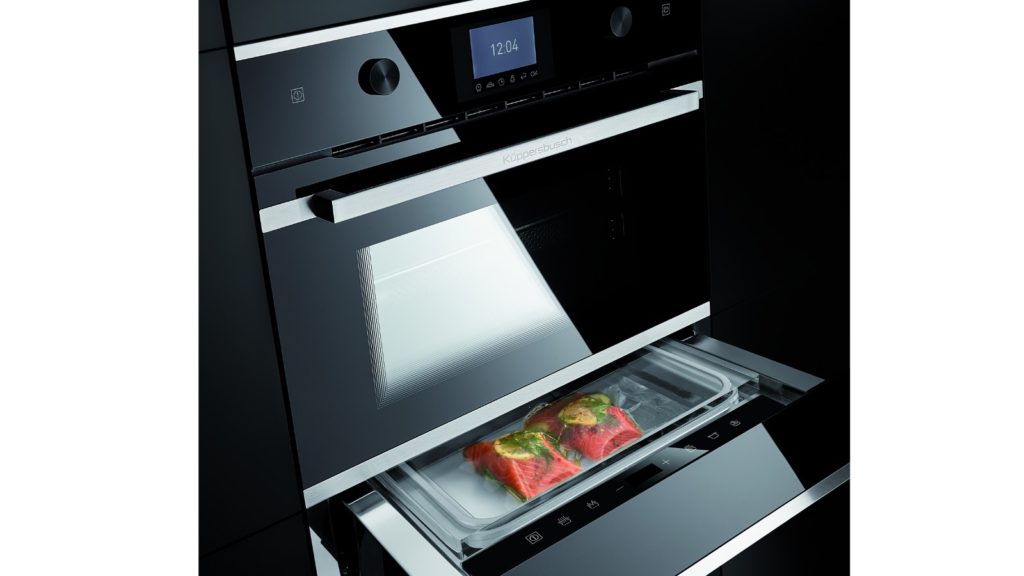Professional cooking results, effortless cleaning and voice controls are fast-becoming the ingredients for built-in oven sales
If the kitchen is the heart of the home, then the oven must be the pulse, as cooking is central to this living space’s activities.
While focal appliances may be present in schemes where consumer want a ‘professional’ aesthetic, built-in ovens arguably have a far wider appeal but offer professional results.
Sponsored Video
With touch controls and handleless models, they can blend seamlessly into the décor meeting the demands for steamlined or even concealed kitchens.
And by offering large capacities and split cavities, allowing two meals to be cooked in one oven, without impacting on floor or additional cupboard space, they meet the needs of compact kitchens without compromise.

Without skipping a beat, then, built-in models have continued to grow in sales up to 48% of total cooking market in 2017, but it’s not only in terms of volume but value, as consumers are looking for high specification models.
Head of kitchen retail at AEG Gordon Dawson said: “Over the last two years, the market has seen an increase in both the value and volume in the built-in ovens market.”
And product manager for Miele Max McCormick agrees: “Despite the harsh economic climate, the built-in market remains buoyant and this trend is set to continue.
“Value remains positive with consumers trading up to models with increased specification, such as self-cleaning features or steam injection and automatic programmes.”
Cleaning up

What used to be considered speciality functions are now fast-becoming standard specification in built-in ovens.
Time pressured consumers are seeking appliances that can help them reduce the amount of housework and since cleaning the oven is rated as the worst chore, according to research from Anglia Home Improvements.
With this demand, combined with more affordable technology, it’s unsurprising pyrolytic continues to gain favour.

Marketing manager of CDA Steve Corbett comments: “Pyrolytic cleaning is becoming standard and as technology moves on will become part and parcel of an everyday oven.”
In fact, Gordon Dawson of AEG points out: “Our most popular model is currently the AEG SenseCook Oven with pyrolytic technology.
“Ovens with pyrolytic functionality or an integrated food probe were not widely known in the market 2-5 years ago.”
In fact, such is the important of self-cleaning, head of category for built-in at Belling Alex Hinton states pyrolytic is a function no manufacturers’ oven portfolio should be without: “A good portfolio should include ovens with easy clean functions, such as pyrolytic self-cleaning and removable catalytic liners, as well as features that enhance the consumer’s cooking ability – intensive bake, fanned grilling and defrost settings.”
Meeting culinary needs
It neatly brings us on to the expectations of consumers surrounded and inspired by TV chefs.
They want their oven to match their ambitions of achieving an array of culinary techniques.

Channel controller for KitchenAid Lee Collett says: “The hobby chef of today seeks a professional experience in their kitchen at home with appliances that feature various programmes and functions that mimic professional chef techniques.”
And UK marketing executive of Fisher & Paykel Amanda Alston agrees commenting: “With an increasing amount of cookery shows, many consumers are experimenting with different cuisines and cooking styles – a real foodie culture is being formed.
“This in turn has an effect on consumers wanting to create their own, perfect cooking stating within their own kitchen.”
And managing director at Bertazzoni UK & Ireland Maurizio Severgnini believes this is a trend likely to continue: “As consumers become more capable chefs, manufacturers will need to include more functionality to keep up with consumer skills.”

Already, it has seen the growth of large capacity single ovens, which can be used for batch baking, as Alex Hinton of Belling points out: “The capacity of our best-selling 600mm single built-in oven was previously 59 litres.
“However, 70 litres is fast becoming an expected prerequisite in the UK market and that’s where we’ve seen the biggest growth.”
And these also optimise the use of space in a small kitchen.
Steam ahead
But it also continues to buoy the market for steam ovens, which is not only supported by the trend for healthy eating but also as a move into the more professional ‘sous vide’ cooking technique.

Maurizio Severgnini continues: “It’s certainly fair to say that consumers are much more conscious of the food they’re consuming these days.
“They are looking for healthier options and ways to cook and steam is a prime example of this.
“As such, we’ve seen more manufacturers including this type of functionality in their product portfolio, so it should become a standard feature in the not-too distant future.”
It has influenced the top-end of the market with more professional-style appliances coming on board, with sous vide ovens joined by blast chillers and vacuum drawers.
But for consumers who don’t have the space or want the complexity of multiple appliances, the demand for steaming can be solved with steam combination ovens.
Max McCormick of Miele adds: “We have seen an increase in demand for greater flexibility – multiple programmes and features that allow passionate home cooks to get the most out of one appliance, and we expect this to develop in 2019.”
Technological controls
Certainly, multi-functionality was at the heart of the recent H-Keepwarm oven launched by Hoover at LivingKitchen, which is claimed once cooked will keep food at a ‘ready to eat’ temperature for up to 14 days.
Is this a sign of what’s to come in built-in ovens?

“In terms of what’s next, we have entered the world of RF cooking [using radio waves to heat]”, says Max McCormick of Miele who adds: “Our Dialog oven, so called because it maintains a form of communication with the food to understand the cooking progress, launches in May.”
It forms part of the company’s launch of its Generation 7000 built-in appliances.
He says it will offer a host of advantages, including accuracy and ease of dish preparation: “By separating the browning from the baking, we can now cook an entire dish at the same time – we call this cooking in the volume – so everything is cooked exactly each time.”
In addition, using M Chef technology McCormick explains it can “cook a complete, multi-component meal without having to add or remove items throughout the process.”
And, there is a continuing move towards technological controls with a march towards the connected home.
Sales and marketing director of Amica Rod Jones adds: “Connectivity is growing slowly with the Internet of Things and voice command devices spreading throughout 21st century homes.”
Sharp Electronics introduced its range of Alexa-controlled smart appliances, including an oven, at LivingKitchen.
And Miele is also set to join the voice control movement, as Max McCormick continues: “Voice control is very much an integral part of appliance smart solutions but relies on the back-up of strong application sand appliance hardware.
“There has to be real consumer benefit and appliances deigned with voice control in mind will offer the best solution.
“We look forward to an exciting launch this summer where voice control will offer new experiences and delight our customers with new capabilities.”
Certainly built-in ovens are responding, at pace, to the needs of consumers, both now and in the future.
So ensure you keep your finger on the pulse so you know what hot’s in the heat of the moment.



